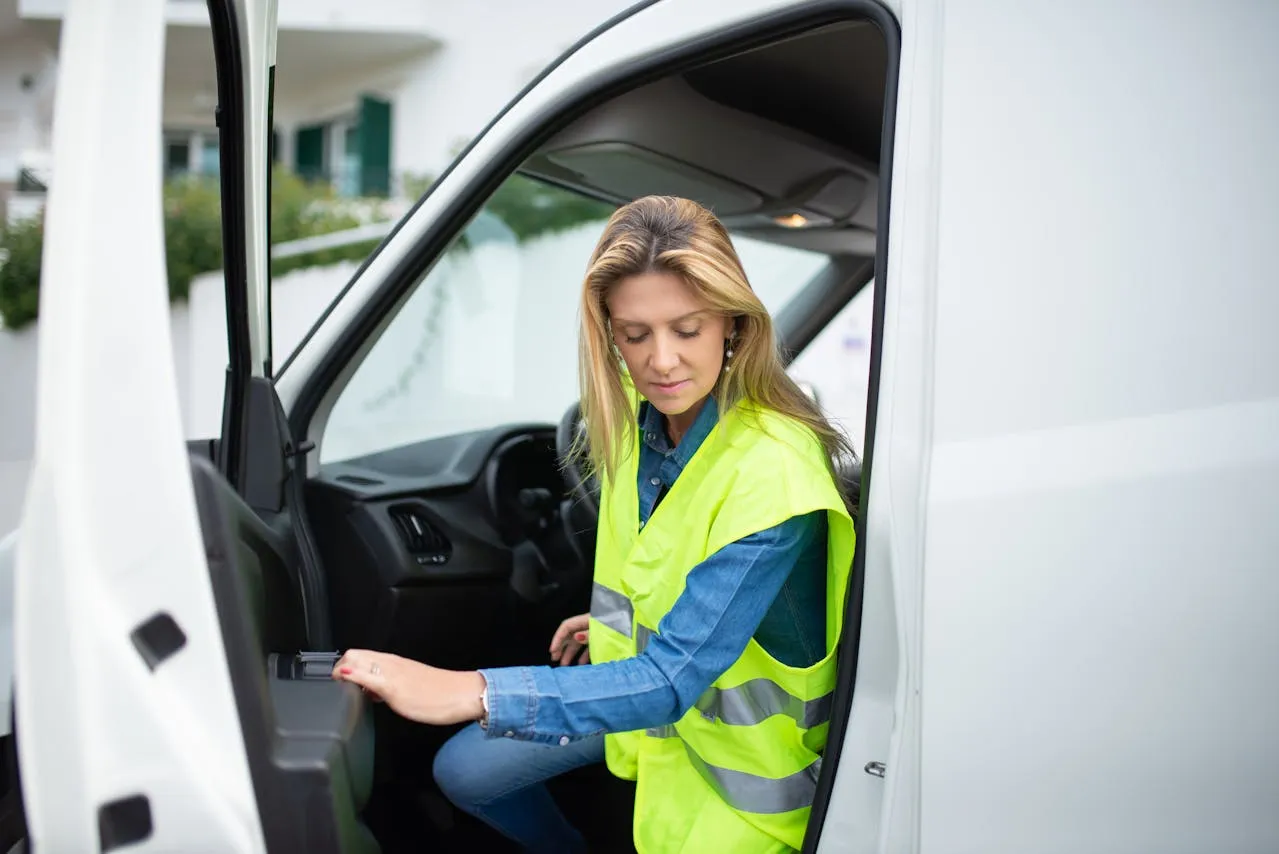- You can usually upgrade mid-loan, but fees and options depend on your finance type.
- Upgrade costs include early repayment fees, remaining loan balance, and potential negative equity, though trade-ins and tax benefits can help.
- Planning ahead—checking loan terms, timing your purchase, and seeking professional advice—can minimise financial impact.
Got your eye on a new set of wheels? In most cases, you can upgrade your business vehicle before your loan ends.
But there are a few things to keep in mind. For example, rules differ depending on the type of loan you have, and you may need to cover extra costs like early payout fees.
So, what’s the smarter way to upgrade without hurting your cash flow? Here’s everything you need to know:
Why might I want to upgrade my business vehicle early?
Upgrading early is about more than just having a shinier piece of equipment. It can improve efficiency, safety, business image, and even your finances.
Access to better tech and safety features
Modern vehicles often come with fuel-efficient engines (aka, lower running costs), newer safety systems, entertainment and in-car tech, and connectivity features to help you drive smarter.
Lower maintenance costs
As your vehicle ages, breakdowns become more likely, and maintenance costs go up. Upgrading doesn’t just mean spending less on repairs and servicing, but also facing fewer interruptions to your work.
Improved business image and branding
Your vehicle says a lot about your company. For some customer-facing businesses, image is especially important (think real estate or high-end service providers). For others, the vehicle can double as an ad on wheels—like trades or mobile businesses.
Upgrading to a newer car shows customers that you’re professional and keeping up with the times.
Tax benefits and financial strategy
In some cases, an early upgrade makes more financial sense than keeping an older vehicle with higher running and maintenance costs.
Plus, you may be able to claim depreciation or lease deductions on the new vehicle.
If interest rates improve or you spot a better finance product, refinancing into a new vehicle could also be cheaper than sticking with your current loan.
Changing business needs
As your business grows, your needs change. You may need a larger vehicle to transport more passengers and take on larger deliveries. Or, you may need to replace your van with a ute or truck to carry heavier equipment.
Does my type of vehicle finance affect my upgrade options?
Yes, your type of vehicle loan plays a big role in what options you have for upgrading before your loan ends. Here’s a quick breakdown for Australian businesses:
How much will it cost to upgrade before my loan ends?
The costs
- Early repayment fees. Lenders want the loan to last for the full term so they can earn as much interest as possible. That’s why they can penalise you when you pay it out before the agreed term.
- Outstanding loan balance. Typically, you’ll need to settle the remaining balance of your loan before you can upgrade.
- Negative equity. If you owe more than your vehicle is worth, you’ll need extra cash to cover the gap.
- Higher monthly repayments. A more expensive vehicle often comes with higher ongoing payments.
- Taxes and fees. Early upgrade costs may include GST, stamp duty, or lease-related tax implications.
- Dealership costs. Finance processing or trade-in fees can also add to the total.
The offsets
- Trade-in value. Depending on the resale or trade-in value of your current vehicle, it could offset upgrade costs.
- Lower running costs. Newer vehicles often have better fuel efficiency and need fewer repairs.
- Potential tax benefits. Depending on your structure and finance type, you may be able to claim depreciation or lease deductions.
What tax considerations come with upgrading mid-loan?
Upgrading your business before your loan ends has tax implications, mainly tied to depreciation and GST.
What happens to depreciation and write-offs when I upgrade?
If you’ve already claimed depreciation or used the instant asset write-off (IAWO) on your current vehicle, you might need to add or deduct the difference between its book value and its sale/trade-in value on your tax return [1].
When you buy the new one, you can usually start depreciating it again or claim the IAWO (provided it is available and your business is eligible) [2].
How does GST work when I change vehicles?
You can usually claim a GST credit on the business portion of your new vehicle purchase, including running costs like registration and insurance [3].
Also, GST may apply on the sale or trade-in of your current vehicle, depending on how it was originally accounted for [4].
What strategies can help me upgrade smartly?
Smart planning can help you replace your vehicle mid-loan without breaking the bank:
- Check your loan terms first, particularly early repayment clauses, payout fees, and trade-in rules.
- Get a few quotes for your current vehicle to see what it’s worth.
- Time your purchase strategically. You may find dealers offering discounts around EOFY, model changeovers, or clearance events.
- Consider refinancing or consolidating your loan. It could be a way to reduce fees or access better rates on the new vehicle.
- Include fuel, insurance, and repair savings in your calculations to see the real financial impact of upgrading.
- Work with an accountant or broker to get professional advice, make an informed decision, and avoid expensive mistakes.
Can Valiant Finance help me upgrade my business vehicle?
Yes! At Valiant, we offer a wide range of vehicle finance solutions, from business car loans to equipment finance, and lease agreements. If you’re looking to upgrade without straining your cash flow, we can help.
Our platform compares finance from over 90 banks and non-bank lenders to find the ones that work for your needs and current financials.
From there, we handle the application process and settle funding on your behalf, so you get money exactly when you need it. Easy as. Get in touch today.
{{first-banner}}
References:
- https://www.ato.gov.au/forms-and-instructions/depreciating-assets-guide-2021/what-happens-if-you-no-longer-hold-or-use-a-depreciating-asset?anchor=Balancing_adjustment_rules_for_cars
- https://www.ato.gov.au/law/view/document?PiT=20240701000001&docid=SAV%2FDEPRECIATING%2F00001
- https://www.ato.gov.au/businesses-and-organisations/gst-excise-and-indirect-taxes/gst/in-detail/your-industry/motor-vehicle-and-transport/gst-and-motor-vehicles/purchasing-a-motor-vehicle
- https://www.ato.gov.au/businesses-and-organisations/gst-excise-and-indirect-taxes/gst/in-detail/your-industry/motor-vehicle-and-transport/gst-and-motor-vehicles/disposing-of-a-motor-vehicle



